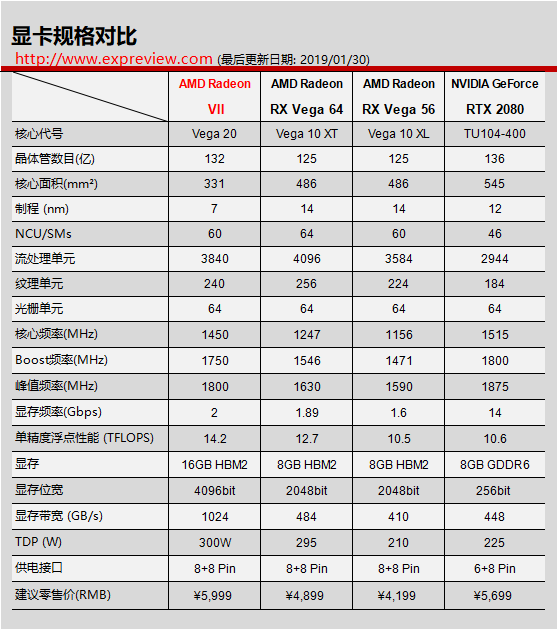News Centerbarrow
Industry News
AMD Radeon VII video card synchrorating: "" 7" "in the futur
2019-05-27 23:15 The author:Administrator
Radeon VII, the world's first game video card made with the 'nvidia' technology, the second generation Vega architecture, and 16GB HBM2 memory, was released by AMD at CES 2019. It was released during the Chinese New Year, which was full of happiness. What new level of Vega architecture can be achieved under the process of 'surprise' m is under review tonight.

AMD Radeon VII was the first Instinct MI50 game graphics card, which was announced at the end of last year. Both are based on the second generation of Vega, which turned out to be 13.2 billion transistors compressed into 331mm2 (roughly the same number of transistors as RTX 2080, which is stuffed into RT Core and Tensor Core). As the gap between transistors becomes smaller, heat accumulates, so the core temperature must be higher. It is no wonder that Radeon VII USES three fans to dissipate heat, which is the result of measuring the heat dissipation efficiency and noise.

The size of Radeon VII is also very interesting. 60 sets of NCU are between RX Vega 64 and RX Vega56. Compared with 64 sets of NCU of Instinct MI60, it is obviously incomplete.
Radeon VII's peak frequency is increased to 1.8ghz. Although RX Vega 64 can reach 1.68ghz with the aid of integrated water cooling before, it is already heating and power consumption limit. AMD has come up with a new term here -- Peak Engine Clock/Peak frequency, which is different from base frequency (the lowest operating frequency at load) and boost frequency (the typical frequency at load). It is actually the maximum frequency that can be reached in a short time, similar to the XFR of the Ryzen processor. Therefore, we have seen why some AIB manufacturers mark Radeon VII video card frequency as 1750MHz and some as 1800MHz. This is how to view the frequency.
In order to get ahead, Radeon VII directly doubled to 16GB HBM2 video memory. With the help of 2Gbps frequency and high video memory bit width, the video memory bandwidth was promoted to the top 1TB/s at one go. Those hoping to do 3D rendering and animation with Radeon VII, let alone run out of 16GB of memory, will be pleased. Secondly, we also suspect that Radeon VII video card performance has improved so much, and there is also the reason that the video memory bandwidth of RX Vega video card is not fully fed.
In terms of FP32 single precision performance, AMD graphics card has always been excellent, RX Vega 56 alone is equivalent to RTX 2080, and Radeon VII also increased from 12.7 tflop to 13.8 tflop, which is about 8.7%, similar to the previous water-cooled RX Vega 64, whose specification is higher than Radeon VII.
Radeon VII TDP was finally confirmed, 300W was basically the same as the power consumption level of RX Vega 64 air-cooled version, which was not low at all, so it was equipped with dual 8Pin power supply.
Is the final price, AMD's pricing strategy in recent years are chasing the competing goods prices, Radeon VII is not exceptional also, chose a RTX 2080 is almost the same price 5999 yuan, and the vast majority of mid-range series RTX 2080 stand on the same level, if the performance on both differ not far, so Radeon VII is very interesting, at least not let the NVIDIA dominance, then later really is to do everything.

NEWS From:超能网

